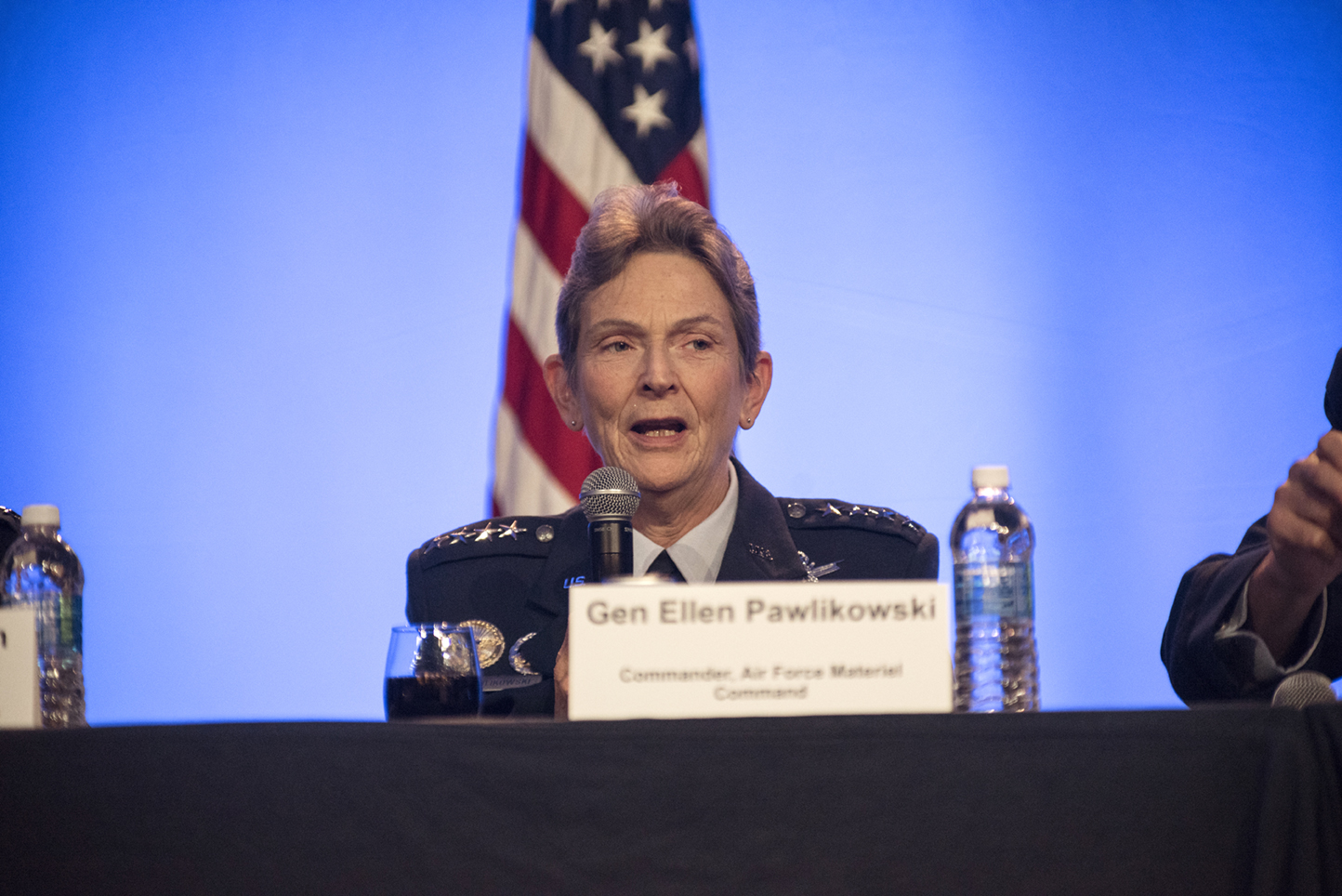
Air Force Materiel Command’s Gen. Ellen M. Pawlikowski told ASC17 attendees current USAF acquisiton processes is designed for big projects and it's time to start “slicing the other way." Staff photo by Mike Tsukamoto.
Several of the Air Force’s top uniformed officials on Tuesday called for a change in mindset for planning and acquiring next-generation USAF systems.
Speaking at ASC17, Vice Chief of Staff Gen. Seve Wilson acknowledged the service has had many problems developing and fielding complex weapons systems over the years, resulting in a process that is often too slow, too expensive, and too complex. Wilson was teeing it up the problem so other officers on a “rapid capability development” panel could offer suggestions.
Air Force Materiel Command’s Gen. Ellen M. Pawlikowski noted military acquisition practices are optimized for developing large, complex, hardware systems. This means an exquisite solution is conceptualized, and then numerous levels of requirements and mandates flow down from the solution.
It is time to start thinking about “slicing the other way,” she said, by developing small solutions that can be quickly developed and deployed. Even if a lower-level improvement only yields a “40 percent solution,” she said, it may well bring additional benefits by virtue of being put into use much sooner.
Lt. Gen. Arnold Bunch, the service’s military acquisition deputy, used the Air Operations Center (AOC) Weapons System 10.2 modernization program as a case study in the need for flexible development programs. After terminating a comprehensive 10.2 contract for major budget and schedule problems, USAF has taken a different approach. Dubbed AOC Pathfinder, it now seeks smaller, more attainable, bottom-up solutions identified and pushed by the users, notably airmen.
Bunch said making AOC Pathfinder a success will require the service to have some flexibility from Congress to move money between accounts and that requirements be seen as a “container we operate in.”
By that, he meant there is a range of improvements and tradeoffs USAF can make to improve AOC software, which does not have a single solution.
Pawlikowski also said USAF needs more connectivity and communications capability, and industry will have to play along with this requirement. “The day of proprietary, stovepiped architectures is over for the Air Force,” she asserted, because isolated systems “don’t connect, and they don’t communicate.”
Earlier the same day, in a meeting with reporters, Chief of Staff Gen. David Goldfein stressed similar points, lamenting an over-emphasis on specific systems—this aircraft or that satellite—at the expense of integration. Goldfein said he wants to have fewer discussions about platforms, and more discussions about nodes in a larger network.
